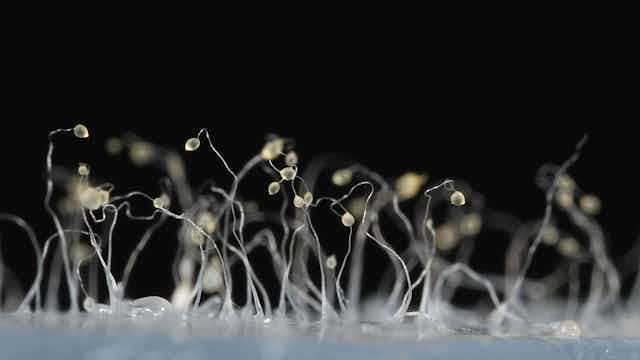There are 10,000 competitors and a variety of events to test their abilities. You would be forgiven for thinking that I am about to talk about the Rio Olympics.
But approximately 5,600 miles away from the games, our lab in Cardiff will be training amoeba participants to take part in various tests – but rather than gold medals, the legacy of these competitions will be new understanding of human diseases, such as bacterial infections, cancer and psychiatric disorders.
Humans and amoeba are distant evolutionary cousins and rather fortuitously have comparable genetic makeups. In fact, the amoeba we are using, Dictyostelium discoideum, played an important role in finding the mechanism of the mood stabilising drug lithium. Despite lithium having been used as a medicine to treat psychiatric disorders for more than a century, the way it worked was previously unknown. But now that the key pathway has been found and characterised in amoeba, and we know how these single-cell organisms are affected by it, researchers can move on to investigating how it works in human cells.
Dictyostelium discoideum is a soil-dwelling social amoeba, more affectionately known as “Dicty”. Dicty was plucked from a forest in North Carolina in 1935 and now resides in hundreds of labs across the world. To date, it has helped us track the movement of neutrophils, one of the most abundant white blood cells in the human body; the mechanism behind the rare “smooth brain” disorder Lissencephaly; resistance to the cancer chemotherapy drug cisplatin; and infections of the harmful bacteria that cause Legionnaire’s disease and TB.
Starting line
Dicty won’t need to throw a javelin or run 100m to win an event: the winner will be the “athlete” who is able to multiply the fastest – although slow growth is just as interesting. Each one of the athletes has a unique feature to contend with; they are each missing a different gene, but otherwise they are all genetically identical. Without the gene, the cell will lose a specific function and so its performance will be affected. Thousands of amoeba with different function handicaps will be observed side-by-side.
Our goal is to challenge the cells to grow in the presence of lithium and see which ones thrive and which struggle. By taking away a specific gene, we can see whether the amoeba performs better than its competitors who have other genes taken away.
We have spent the past two years bringing together and cultivating these miniature athletes for this project in a bid to create a powerful new resource for the scientific community. Shortly these tiny athletes will be put into stasis and shipped around the world to take part in competitions and help other researchers explore molecular mechanisms.
As the 2016 amoeba games open, the thousands of amoeba will be placed in about 3⅓ tablespoons of nutrient rich broth and compete simultaneously in the first lithium challenge. It is easy to imagine now that the whole human genome has been sequenced that we know the role of every A, T, C and G – but in truth our genome is vast and this is far from the case. We hope the winners (and the losers) will reveal further new components and pathways.
One key element that has made this possible today has been the affordability and capacity of next-generation sequencing technology. Less than £1,000 will buy us a mind-boggling 400m sequencing reads. Each amoeba has a unique athlete number and so can be detected by sequencing and counted. This would have been impossible 10 years ago, but it has now given us the ability to monitor thousands of individuals simultaneously and detect changes in abundance. Plus 400m sequencing reads is enough to run three heats so we will make sure the true winners reach the podium.
Each event will reveal how different genomes are affected in the presence of lithium and so help us study the processes of human health and disease. This simple yet powerful model organism will play an important role in discovering how our genomes function and allow us to develop better medications.

